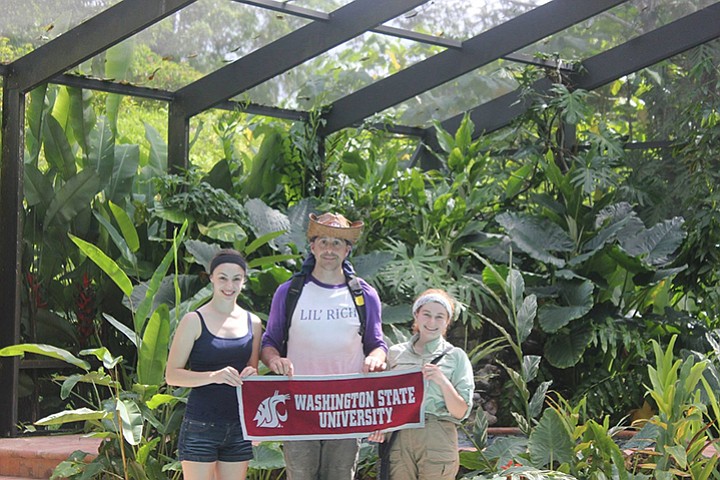An archaeological dig site in Belize had plenty of Cougars.
Washington State University Vancouver students Penny Hughes, Richard Mahurin, and Justine Hanrahan were among the 12 students selected to participate in the Texas Tech University’s archaeology field school at the ancient Mayan city of Chan Chich.
“It’s an ancient Maya city, so we don’t know the original name for it,” Hanrahan, 19, said. “We were excavating ancient Maya plazas, and we were primarily finding structural components of the Maya city.”
The field school lasted for 28 days, from May 19 to June 16, in a remote jungle in northwestern Belize, near the Guatemalan border. The students stayed in the nearby Chan Chich Lodge. The group had the benefit of being the only field school on site, allowing them to work side-by-side with the project’s archaeologists.
Rewarding experience
It wasn’t Hanrahan’s first excavation; she had previously volunteered at the summer field school held at Fort Vancouver National Historic Site. Getting her hands dirty at Fort Vancouver is what initially sparked Hanrahan’s interest in archaeology. Before her trip to Belize, she was beginning to doubt the real world value of an archaeology degree, she said.
“Right before I left for field school, I was feeling sort of discouraged about archaeology, that I wasn’t going to be able to do it,” Hanrahan said. “This trip opened my eyes to all the different aspects of archaeology, inspired me to explore more through archaeology, and explore archaeology itself.”
“(The field school) proved to be a test at the same time as being as an amazing rewarding experience.” It wasn’t all digging up ancient artifacts; the group took day trips to other Maya sites, including a bit of cave spelunking to see Actun Tunichil Muknal. The cave is home to “The Crystal Maiden,” a young Mayan girl whose skeleton has calcified.
“When you read about archaeology, you read about the exciting finds; in reality, archaeology is slow. But you really get to know the site that you’re working on,” Hanrahan said. “We’d get so attached to the units we were working on” that it would be hard to move to the next dig area. The benefit, she said, is a better understanding of the context of the site’s discoveries.
“It’s one of an archaeologist’s main responsibilities to make sure that that context is recorded.”
After returning home to Vancouver, Hanrahan has jumped from Mayan culture straight into the Hudson’s Bay Company, as she works during this summer’s archaeological field school at Fort Vancouver. She and Richard Mahurin were elected as next year’s vice president and president for the River Cities Anthropological Society at WSU Vancouver.
“I used to think I knew a lot about archaeology,” she said. “I’ve seen so much that I’ve barely hit the beginning, it’s encouraging to know that there’s so much to learn.”
Bits ‘n’ Pieces appears Fridays and Saturdays. If you have a story you’d like to share, email bits@columbian.com.




